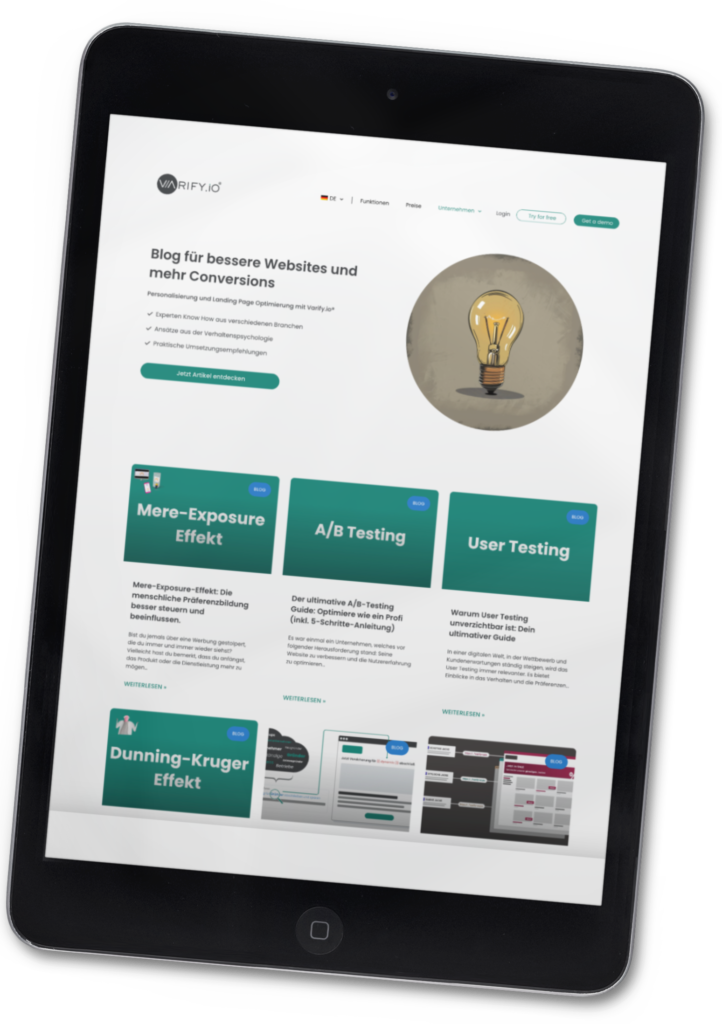In an age where technology plays a role in nearly every aspect of our lives, the way we interact with digital products can influence our decisions, sensations, and ultimately our overall user experience.
Usability and user experience have become more than just buzzwords - they have become crucial factors for success in the digital world. But why are they so important and how have they evolved?
Table of contents
Why are usability and user experience important?
All of us have experienced it: a website or app that is confusing or difficult to use. Such experiences can be frustrating and often lead to users bailing or opting for a competing service.
This is where usability and UX come into play. They determine how easy and pleasant it is to use a product or service and have a direct influence on the success of a digital offering.
Definitions and delimitation
Usability
Usability, often referred to as ease of use, refers to the ease with which a user can use a product or service to achieve their desired goal. It is not only about intuitive design decisions, but also about minimizing errors and increasing efficiency.
User Experience
User experience, or UX, is a broader concept. It refers not only to how easy a product is to use, but also how it makes the user feel. A product can be user-friendly, but if it doesn't satisfy or delight the user, the UX is considered negative.
The background of usability
Digitization has taken our world by storm, and with it came new design challenges and opportunities. While early computer interfaces were often complicated and incomprehensible to the average user, the increasing reliance on technology led to the need to create more user-friendly designs.
The emergence of the terms and their establishment in the industry The terms usability and UX emerged in the 1980s and 1990s. They were born out of the need to make computer and software designs more user-centric. Over time, it became clear that simply making software work was not enough - it also needed to be user-friendly and engaging.
DIN EN ISO 9241: Standardization and importance
DIN EN ISO 9241 was developed to standardize the growing importance of usability and UX. This standard sets standards for the ergonomics of human-system interaction and has established itself as an authoritative guideline for good design.
Relevance in different application areas
In addition to the obvious application area in the digital world - websites and apps - the relevance of usability extends to almost all product categories. In medical technology, for example, devices that are easier to use can not only make the work of medical staff easier, but also increase patient safety. A medical device that causes fewer operating errors through intuitive design can ultimately save lives.
Usability is just as important in the automotive industry. In times of increasingly complex infotainment systems in cars, it is crucial that drivers can use these systems safely and efficiently without being distracted by traffic.
Household appliances are another area where usability plays a role. An intuitive oven or an easy-to-use washing machine not only improve the user experience, but can also reduce energy consumption when users select more efficient programs or settings.
How to achieve good usability and user experience?
To develop products with high usability and positive user experience, continuous user research is essential. It enables designers and developers to gain deep insights into users' needs, desires, and pain points. User interviews, for example, provide qualitative feedback on how users interact with a product and what problems they experience. Eye-tracking technology can help identify which areas of a website or app attract particular attention and which are ignored.
In addition, iterative design processes that involve prototyping, testing, and repeated improvement are critical to ensuring that the final product meets user requirements.
Economic and practical advantages
The ROI (return on investment) of investments in usability and UX is often clearly visible. Products that are easy to use require less support, which in turn leads to cost savings. An improved user experience can also lead to higher conversion rates, whether in the form of sales, signups, or other key metrics.
Furthermore, a positive user experience generates word of mouth and loyal customers, while a negative experience can have the opposite effect. In an age where users have a plethora of options at their disposal, high usability and a positive user experience can be the deciding factor that makes them stick with a particular product or service.
Summary and concluding remarks
The importance of usability and user experience in the modern product landscape cannot be overstated. In an increasingly complex digital world, it is crucial for companies to put the user at the center and ensure that their products are not only functional, but also enjoyable to use. By investing in usability and UX, companies can not only gain more satisfied customers, but also increase their economic success.
